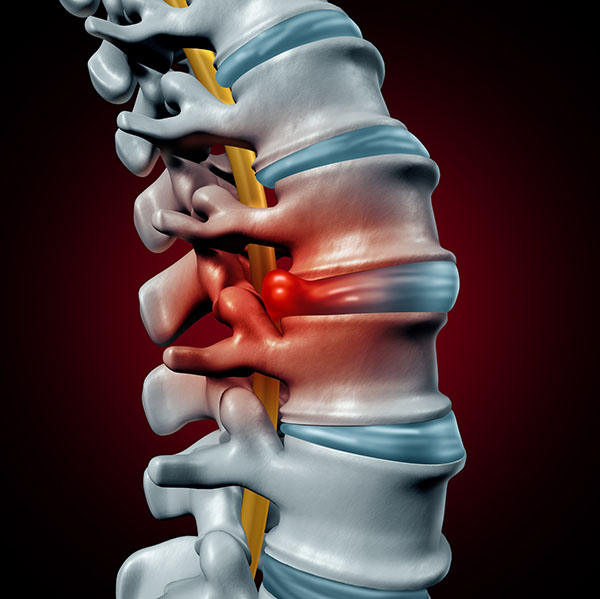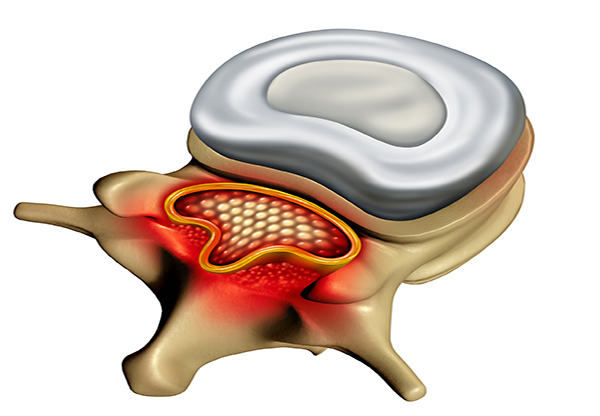
Neck

Is neck pain
If you have neck pain, no one has to tell you how it disrupts your entire life. Even everyday things cause excrutiating pain. Knowing what causes your pain won’t make it feel any better, but understanding the source can help you start your journey to greater healing.
About your neck
The spine in your neck area is called the cervical spine and is made up of the first seven vertebrae in the spine, starting just below the skull and ending just above the thoracic spine (upper back). Your cervical spine is a lot more mobile than the other two sections, with the ability to turn in many different directions.
Unlike the rest of the spine, there are special openings, called vertebral foramen, in each vertebra of your cervical spine. These openings provide a passageway for arteries to carry blood to the brain.
Although your cervical spine is very flexible, it is also at risk for injury from strong, sudden movements, such as whiplash-type injuries. This is due in part to the limited number of muscles located in the cervical area, combined with the fact the cervical spine has to support the weight of the head, which weighs an average of 10 – 13 pounds.
These factors combined with the stressors placed on your neck through trauma or even just daily activities places your cervical spine at risk for developing a number of painful conditions, like those detailed below:

Herniated
Discs
The term “herniated disc” refers to a problem with one of the rubbery, gel-like cushions between the vertebrae of the spine, in this case the cervical spine. Disc herniation occurs when the interior “jelly” of the disc pushes through the tougher exterior and irritates nearby nerves, resulting in pain that ranges from mild to severe.
When a disc is herniated, it may bulge and the jelly-like interior could leak out through a tear, or the bulge may press against or pinch a nerve.
SYMPTOMS
Symptoms caused by a herniated disc include:
- Pain that radiates down the arm to the hand or fingers
- Numbness or tingling in the shoulder, arm, or hands
- Weakness of hand and or arms
Pain is caused by inflammatory chemicals that are released around the injured area, and the injured disc can also put pressure on the nerve roots as they travel through the adjoining tunnel to and from the spinal cord. This can cause pain, pins and needles and numbness into your leg and also lead to significant muscular weakness.
TREATMENT
Most people with mild disc herniation will improve on their own in about six to eight weeks. For other people, the pain will be more intense and persistent and physical therapy may be indicated to help alleviate symptoms. Anti-inflammatory medication and pain relievers may also be necessary.
In a small group of people, symptoms don’t respond to conservative measures or time. When this is the case, Dr. Soldevilla may recommend surgery, particularly if there is persistent pain or weakness in the arms or legs. When surgery is indicated, it is usually aimed at reducing the pressure from the herniated disc on surrounding tissues and is especially focused on relieving any pressure on the nerve roots as they exit from the spinal cord. This should relieve any symptoms of pain or sensation traveling down into the arms or legs.
There are several different types of surgical procedures for herniated discs. Dr. Soldevilla will discuss these procedures with you and together you will choose the one that is most suitable for you.
Fortunately, recent technological advancements in spinal surgery have led to much less invasive procedures for disc herniation. Afterward, most patients enjoy a faster recovery.
Radiculopathy
(Arm Pain)
Radiculopathy is the clinical term that describes a nerve root in the neck area becoming inflamed or damaged and causing pain and other symptoms in the arm/shoulder/hand area. It most commonly results from degenerative changes to the cervical spine (such as bone spurs and cervical disc herniations) over long periods of time, but can also occur due to acute injury or illness.
SYMPTOMS
With cervical radiculopathy, pain can radiate from the neck to anywhere along the arm area, including the shoulder, hand, and fingers. Other symptoms in this area can include:
- Numbness
- Altered reflexes
- Weakness
- Tingling
TREATMENT
Cervical radiculopathy can be treated in a number of different ways, both surgical and non-surgical. Non-surgical treatments are typically the first line of treatment and can include:
- Rest or activity modification
- Physical therapy
- Ice and/or heat therapy
- Medication including over-the-counter anti-inflammatory drugs and/or pain relievers
- Cervical traction
- Manual manipulation
- Epidural steroid injection
If non-surgical treatments don’t provide the pain relief you are looking for, surgery could be the next step. The most common surgery performed for cervical radiculopathy is anterior cervical discectomy and fusion (ACDF) where Dr. Soldevilla makes a small incision in the front of the deck to remove any disc herniation and then fuses the discs.


Cervical
Myelopathy
If you have cervical myelopathy, you have undue pressure on your spine in your neck caused by a condition called cervical spinal stenosis. This occurs due to compression of the spinal cord due to degenerative changes linked to aging. As a person ages, several things may start to happen:
- The discs between the vertebrae start drying out and begin to bulge or herniate
- The shape of the vertebra changes due to arthritis, causing spur-like protrusions
- The ligaments linking your vertebrae thicken
It is a combination of these factors that usually lead to a narrowing of the spinal canal in the neck, eventually leading to pressure on the spinal cord and cervical myelopathy.
SYMPTOMS
Because the symptoms of cervical myelopathy develop over a long period of time, many people mistakenly attribute the symptoms to “just old age,” when, in fact, it may be a treatable condition. These symptoms include:
- Pain, tingling or numbness in the arms
- Pain, tingling or numbness in the legs
- Difficulties with coordination or speed of walking
- Difficulties with fine motor control of the hand (such as writing or manipulating small objects)
- A feeling of heaviness in the legs
TREATMENT
There are several different ways to treat cervical myelopathy. Some patients in the beginning to middle stages of the condition find immobilization with a neck brace effective, while physical therapy may also be of benefit.
A small group of patients, however, may only find relief through surgery to take the pressure off the spinal cord. This is particularly true for people who display advanced symptoms that indicate nerve and spinal cord compression.
There are a number of surgical approaches for cervical myelopathy and Dr. Soldevilla will discuss with you the best approach for you. Surgery will probably be followed by a period of rehabilitation to ensure that you regain as much mobility as possible and to help you resume your normal life.
Cervical
Spinal Stenosis
When the degeneration of the spine leads to a narrowing of the spinal canal, spinal stenosis occurs. Cervical spinal stenosis is usually a slow process that occurs over years and is related to arthritis. It results in thickening of the ligaments, formation of bone spurs, and deterioration of the disc material. As a result, the spinal canal narrows and pinches the nerves. Bone spurs may also press on the spinal cord.
SYMPTOMS
Cervical Stenosis may cause the following symptoms:
- Neck or arm pain
- Numbness and weakness in both hands
- Loss of coordination when walking or during other activities
- Muscle spasms in the legs
Cervical spinal stenosis may require surgery, possibly urgent or even emergency surgery.
TREATMENT
Conservative treatment may be sufficient to alleviate symptoms of stenosis. Surgery may be recommended if there are signs that the spinal cord is compressed or there is significant risk that the spinal cord may become damaged. Surgery is necessary if neurological symptoms increase (i.e. a patient has difficulty with balance or walking). In cervical stenosis, discs and spurs can be removed from the front or back of the neck. Spinal fusion may be performed to stabilize the spine or if a disc is removed.


Degenerative
Disc Disease
Degenerative disc disease is a common condition among aging adults that refers to the process of degenerative changes that occur in the discs – the soft, gel-like pads located between the vertebrae in your neck. Wear and tear on your cervical spine over time causes the discs to gradually lose the ability to cushion the vertebrae.
These discs function as shock absorbers when you flex, rotate or bend your back or neck. As we age, the discs may thin to the point where there is insufficient padding between vertebrae. At the same time, the outer layer of the spine can develop cracks, which gradually worsen. The discs may also develop herniated areas, which is where the central portion of the disc protrudes through the outer layer.
SYMPTOMS
A cervical disc herniation may cause pain, tingling, numbness, or weakness in the neck, arms or hands if it compresses a nerve. If it also compresses the spinal cord, it can cause weakness in the legs as well. A lumbar disc herniation in the lower back may send pain shooting into the buttocks or down the leg, local severe back pain, burning in the back, weakness in one leg or both legs, changes in bowel or bladder activity, and lack of sensation or pins-and-needles tingling in one or both legs.
Despite the fact that the physical degeneration in your spine will gradually progress over time, the good news is that your symptoms may not necessarily progress to the same extent. Sometimes, symptoms can even improve over time. A number of studies have shown that pain levels in this condition are actually worse in younger people than older. There are a few reasons why this may be so – the joints in the back tend to stiffen up with age, leading eventually to more stability; and also, the inflammatory chemicals that are contained within the nucleus pulposus can eventually become depleted.
For some people, however, particularly if the pain levels are severe, or if there is pressure on the nerve roots, symptoms will continue to escalate with time.
TREATMENT
Most people with degenerative disc disease respond well to conservative, non-surgical treatment. This conservative treatment typically includes anti-inflammatory medication and pain relievers. Physical therapy can help to manage your symptoms and may include manual therapy, heat and other pain-relieving methods, stretching, strengthening exercises and education to help you manage your condition.
For a small group of people who don’t respond to conservative treatment, surgery may be necessary, particularly if there are signs and symptoms of nerve compression or joint instability. There is a wide range of surgical techniques that may be used for this condition, depending on the extent and exact nature of the damage to the disc and spine. Dr. Soldevilla will discuss with you fully the type of surgery he recommends for you and will work with you to develop a treatment plan.

